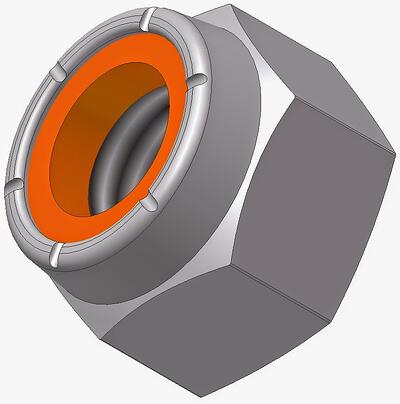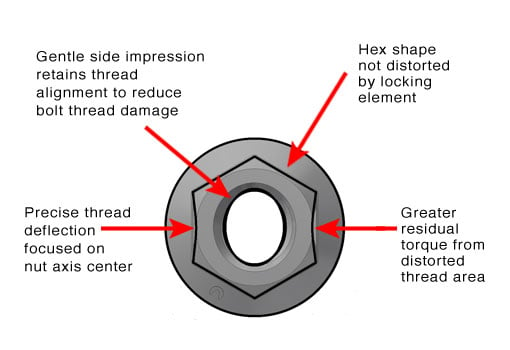In addition to inspections common to all internally threaded fasteners (nuts), prevailing torque locknuts are inspected for prevailing torque performance. Prevailing torque is the resistance to assembling or disassembling the locknut and mating part when the assembly is not clamping (not developing tension in the mating part). Prevailing torque performance is sensitive to a number of assembly condition variables, including:
- Mating part characteristics (Pitch diameter, hardness, plating/finish, start thread bevel, thread surface condition)
- Assembly Speed
- Assembly Distance
To support the repeatability of the results, a complete inspection procedure definition will specify (control) all these quantities, because as any of the above varies, the results of the inspection will vary.
Some inspection procedures require the assembly to be driven to a specified clamping condition (torque-tension test), and to measure the drive torque required to achieve that tension. In these instances, the bearing surface conditions (hardness, plating, hole diameter, washer diameter, washer thickness) must also be specified. Some inspection procedures require multiple installation and removal cycles to demonstrate the wear characteristics of the prevailing torque.
Also, most inspection procedures include changing conditions (initially driving prior to encountering the prevailing torque element, driving with prevailing torque through an unclamped distance toward clamping, loading to or unloading from a clamped position, driving away from a clamped position, changing direction toward clamping again, …). These condition changes may or may not have functional significance to a particular application, and so may or may not require concurrent torque measurement. A complete inspection procedure definition will include the periods and points withing the procedure to measure torque. It will also specify the required accuracy of the torque measurements, and the required accuracy of the control variables (angular position, clamp tension, etc.) that trigger the measurements.
A proper prevailing torque inspection presents the following difficulties
- Complexity – a number of conditions must be controlled and/or must trigger measurements.
- Expense – relative to simple dimensional inspections, the prevailing torque inspection takes a long time on expensive equipment; the test is destructive and consumes a locknut and usually a mating part.
- Relevance – If the assembly conditions of the inspections are different than the assembly conditions of the application, the inspections results may not be a good predictor of the success of the application assembly.
Industry standards are a great resource for qualification test procedures, with the following caveat: If your application assembly conditions are different than the standard test conditions, “your mileage may vary”.







